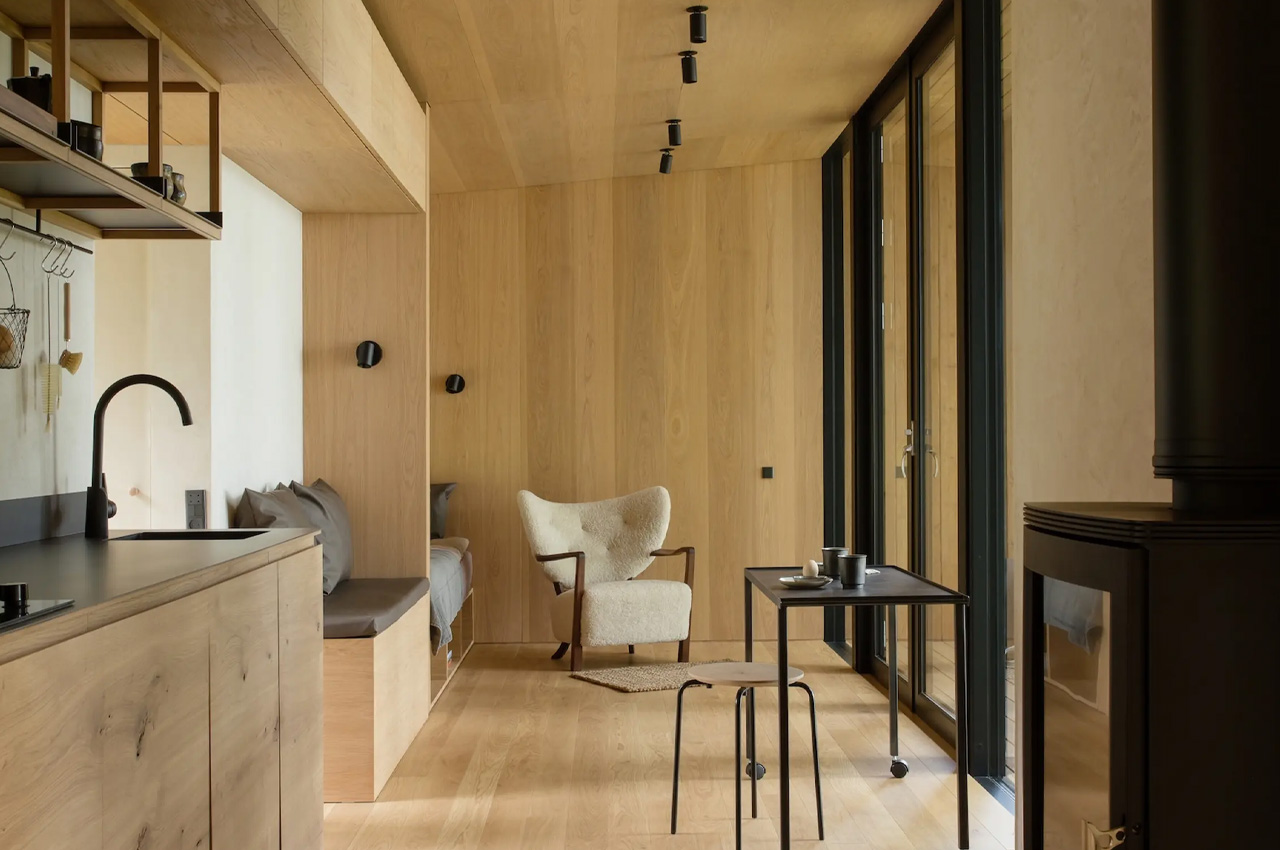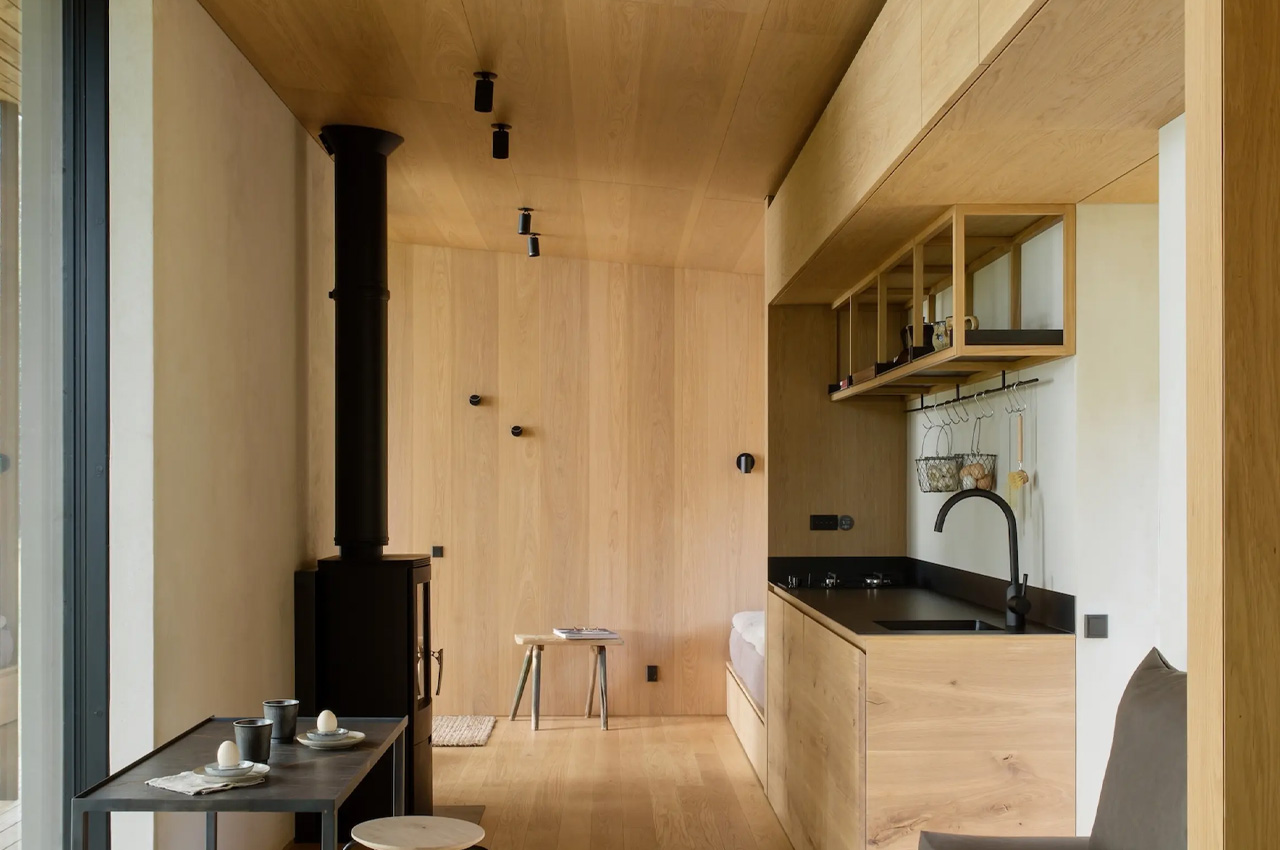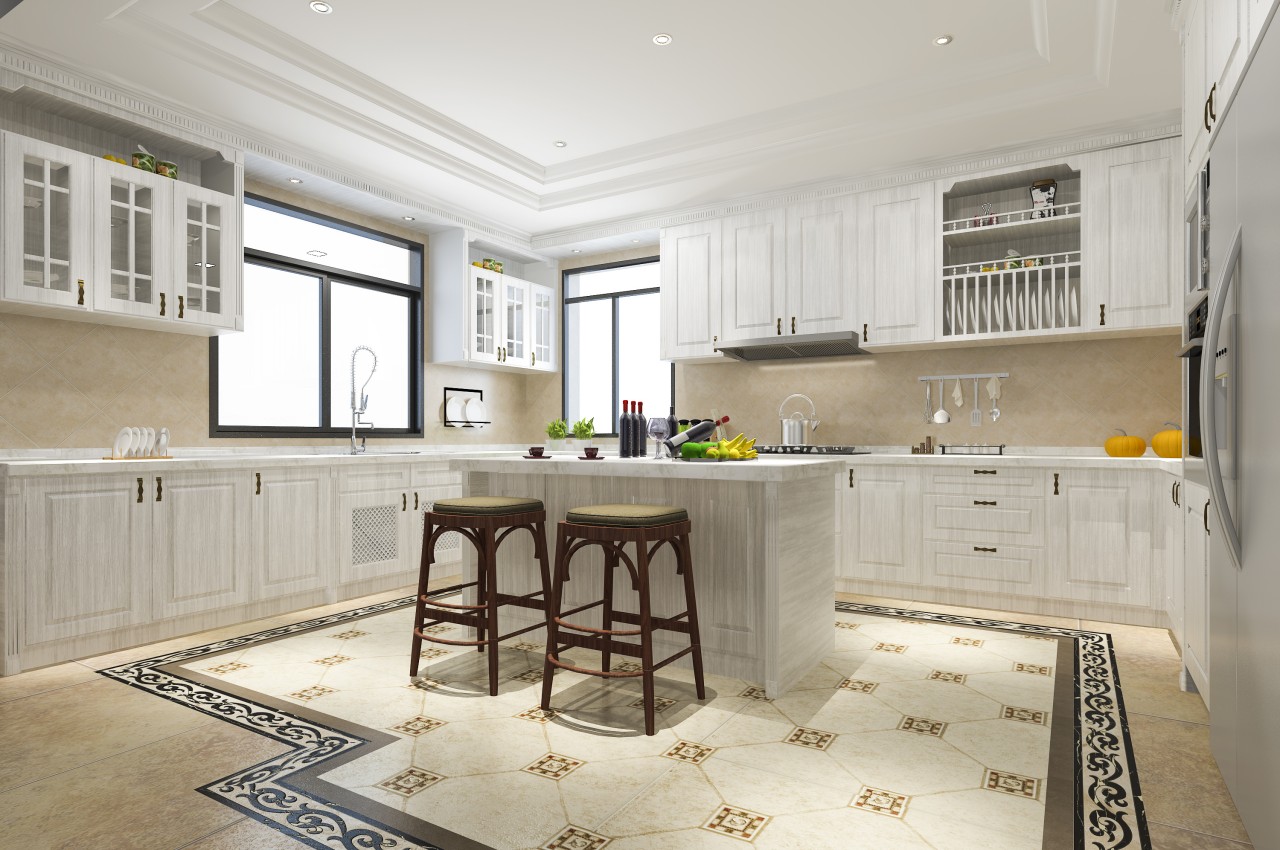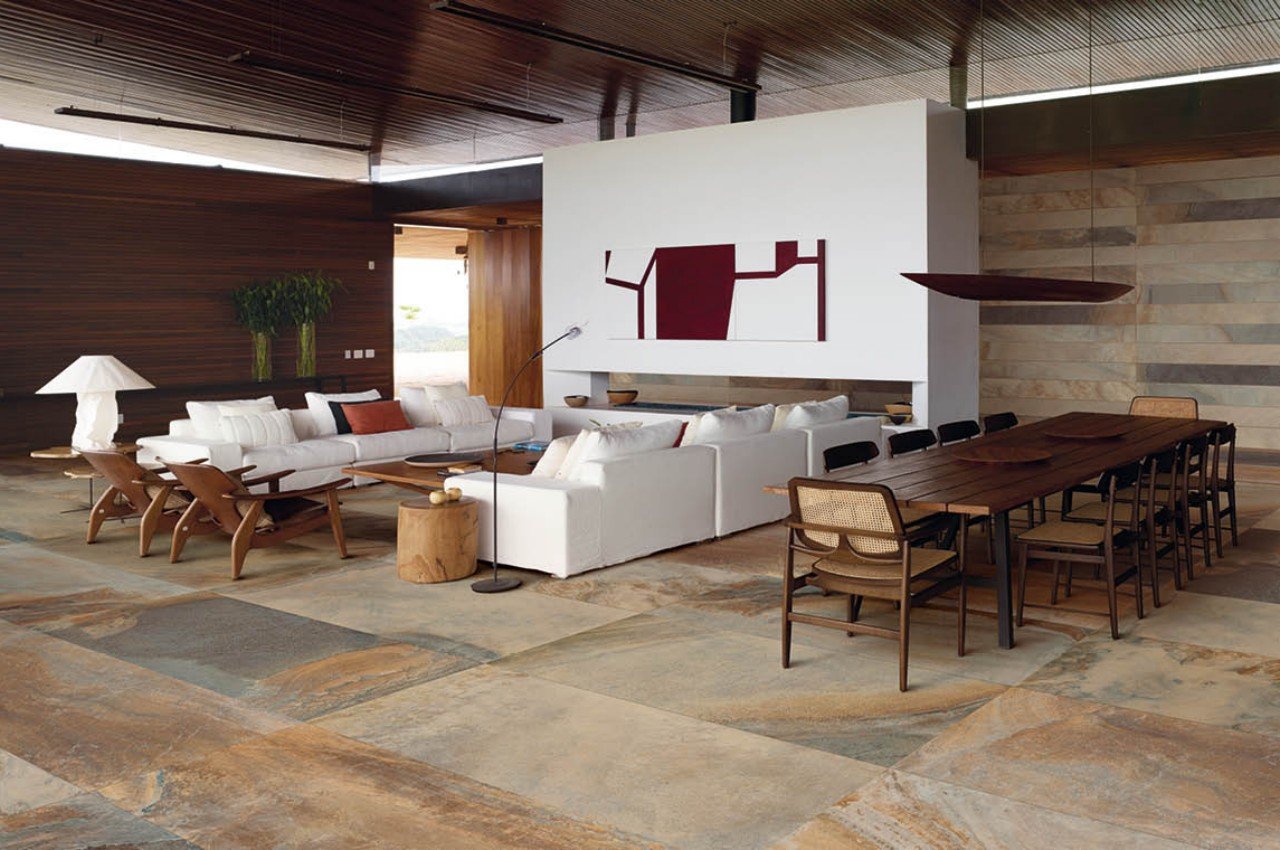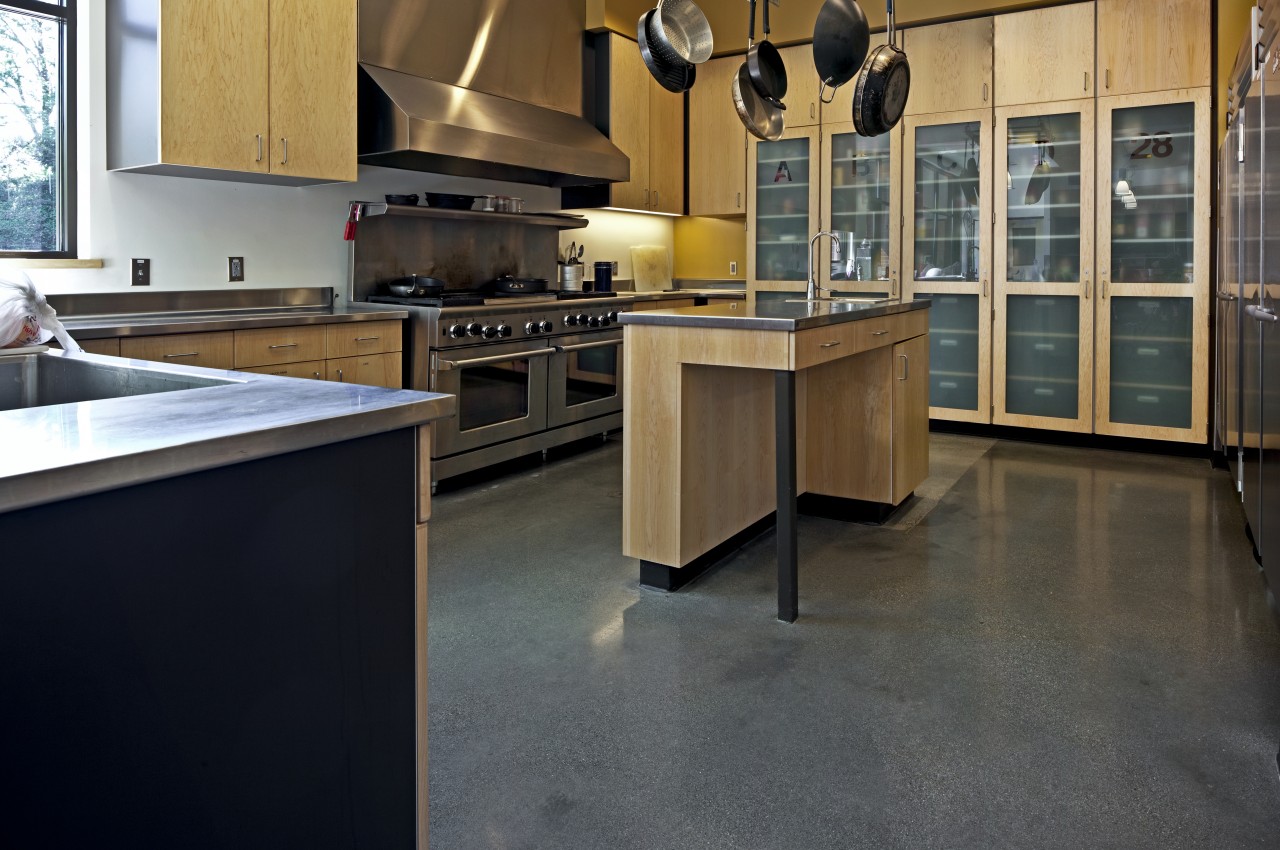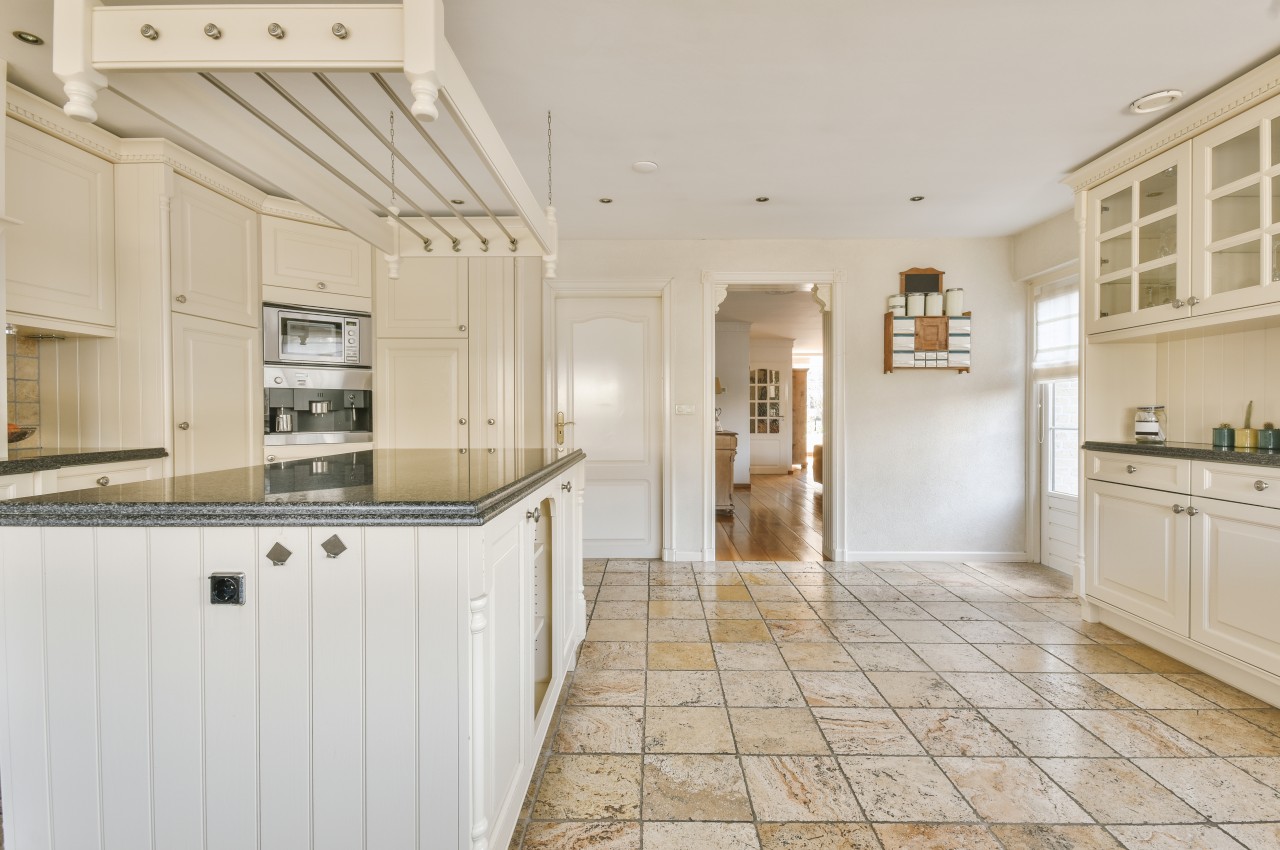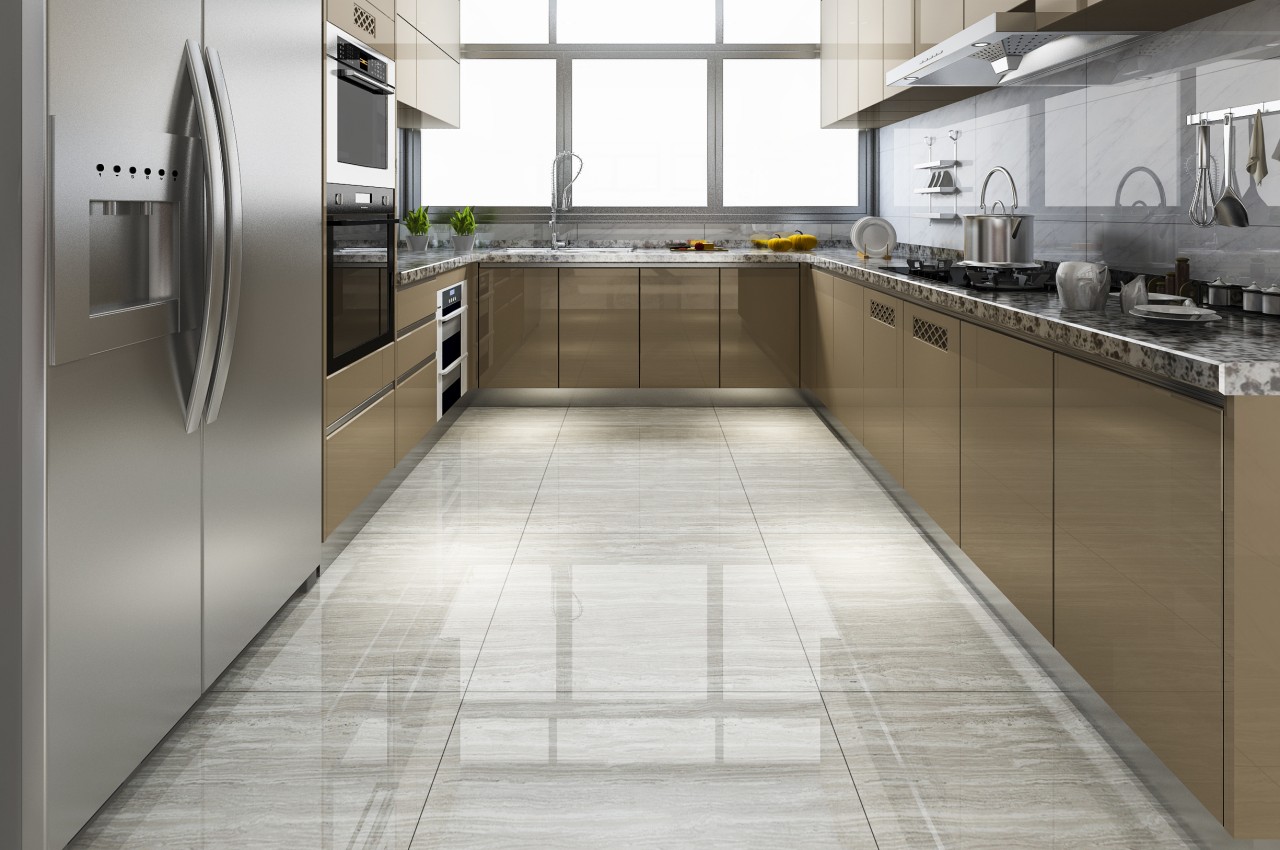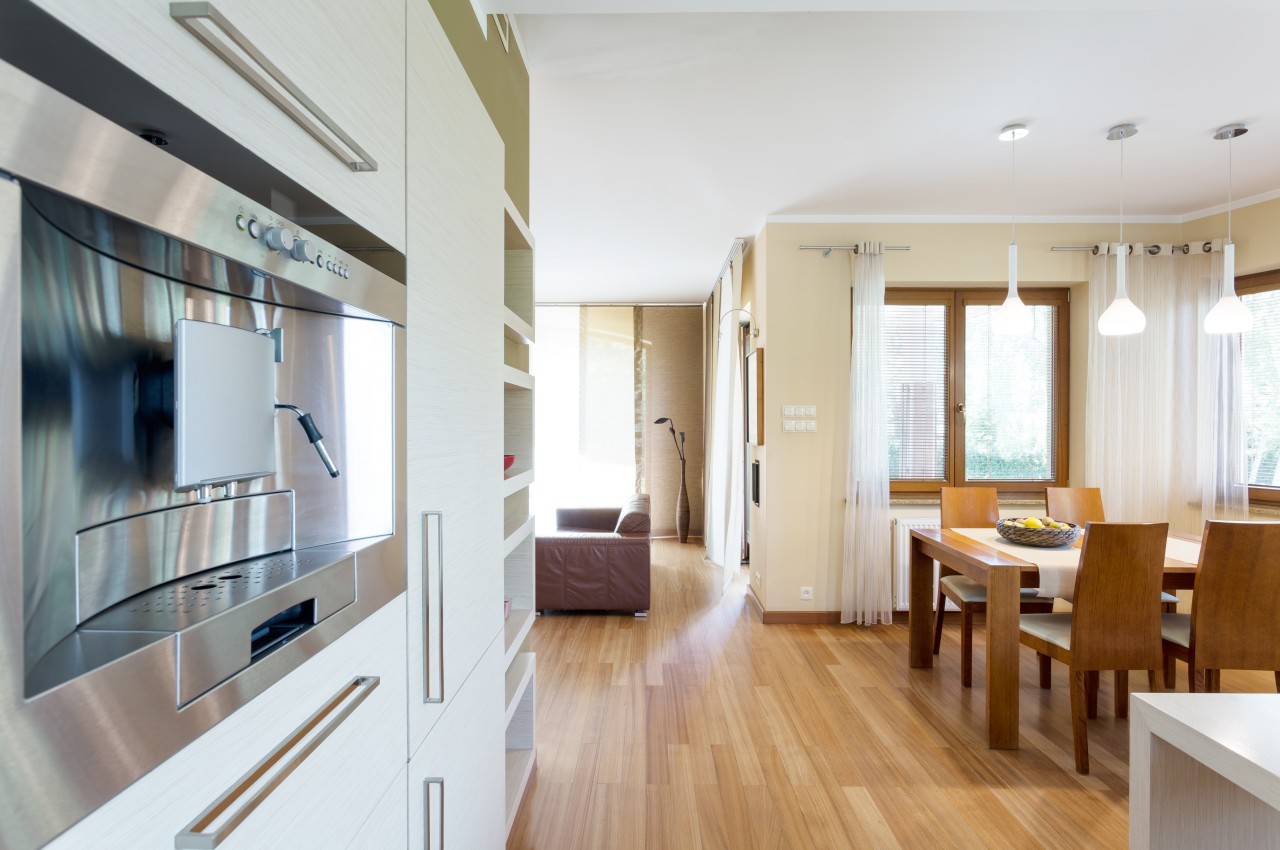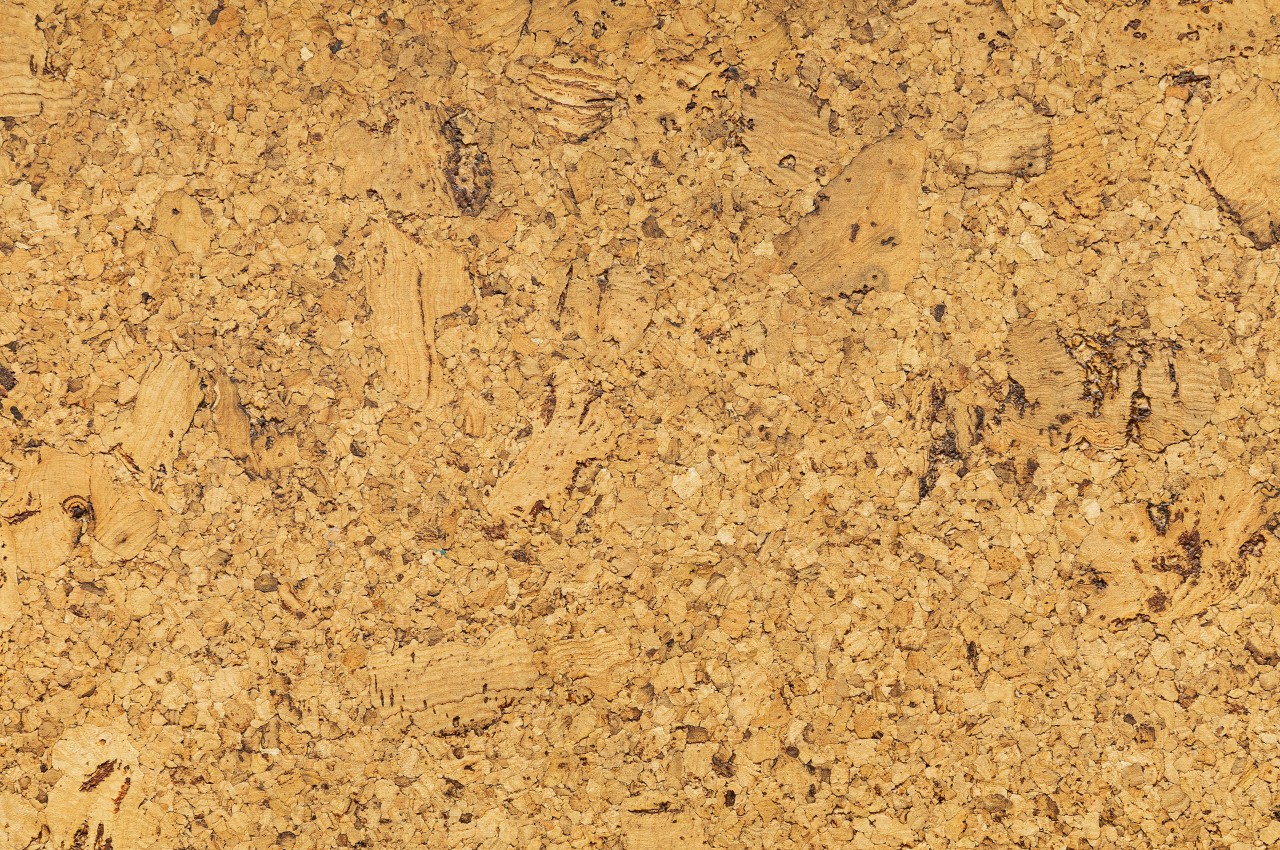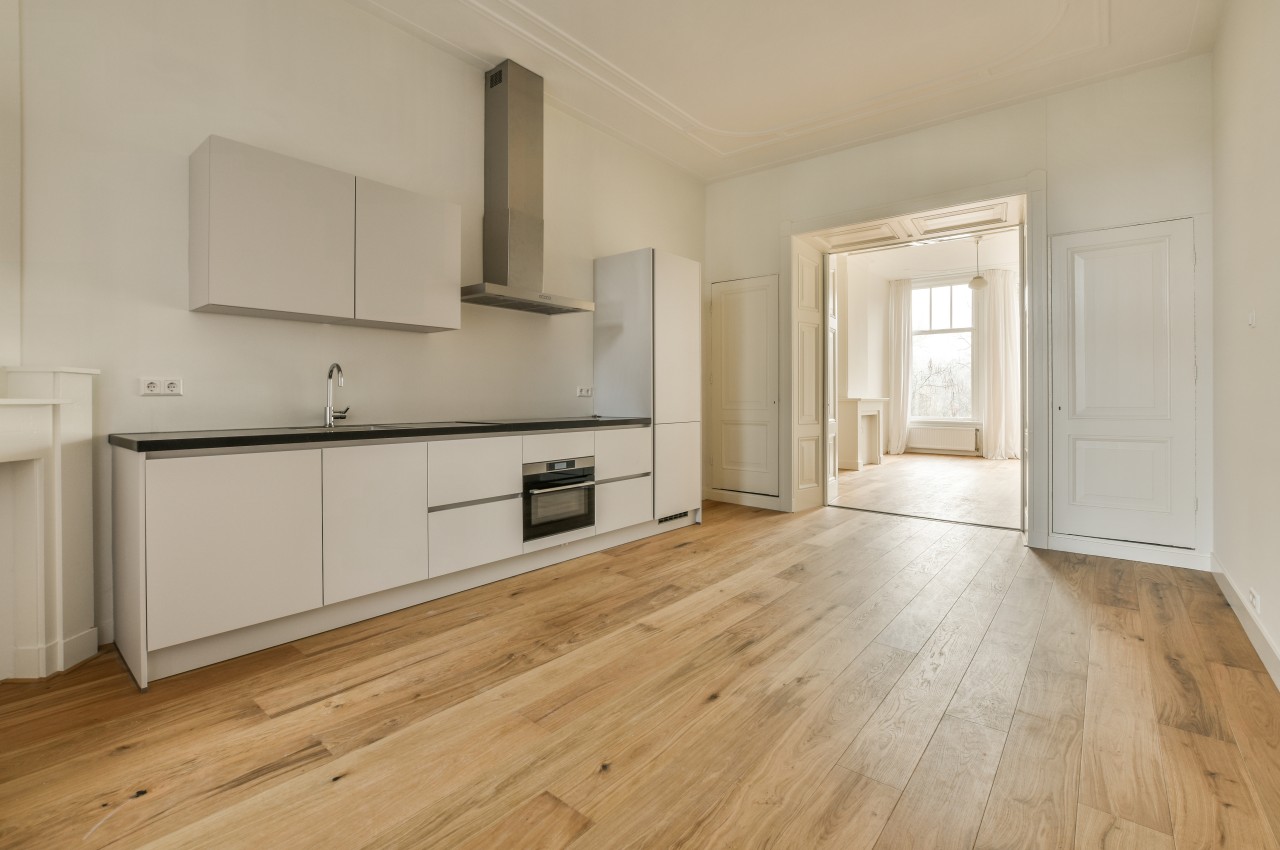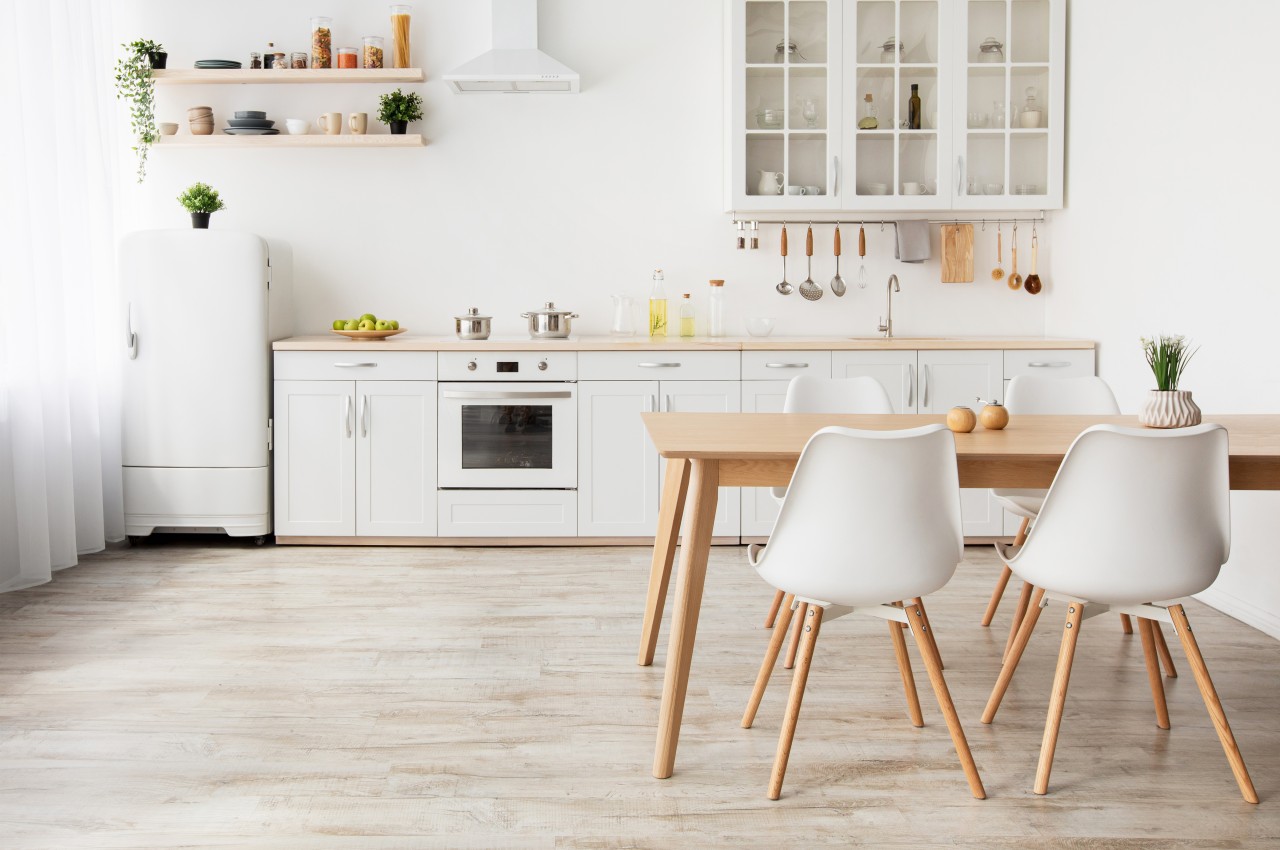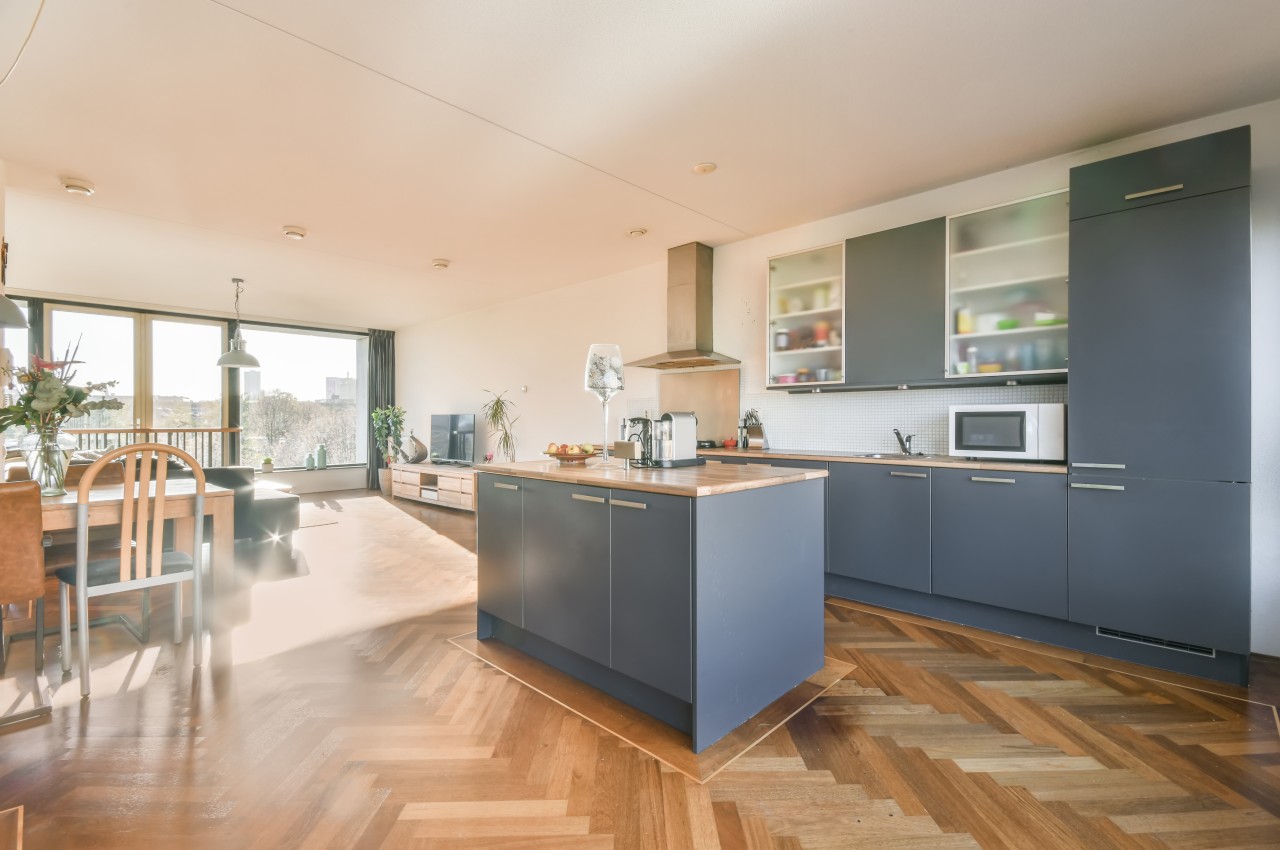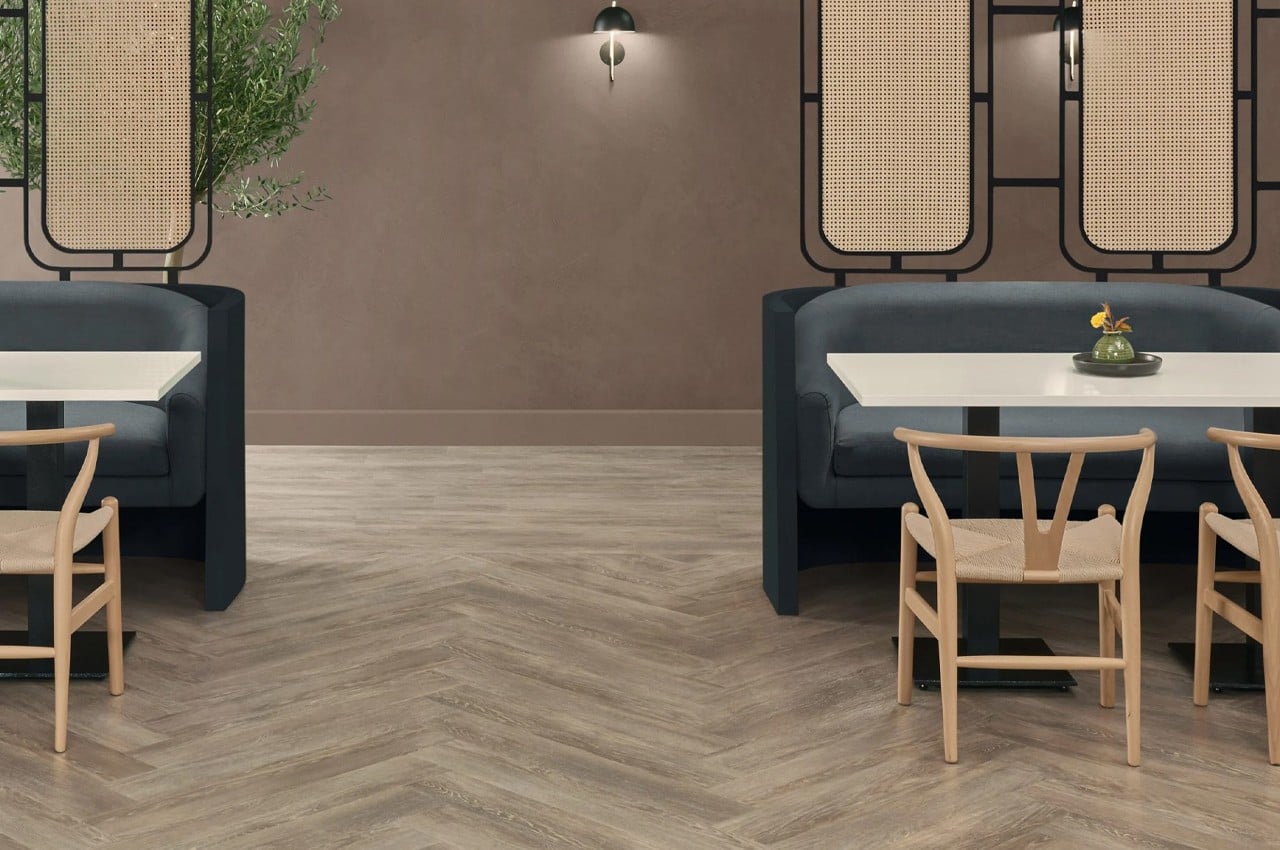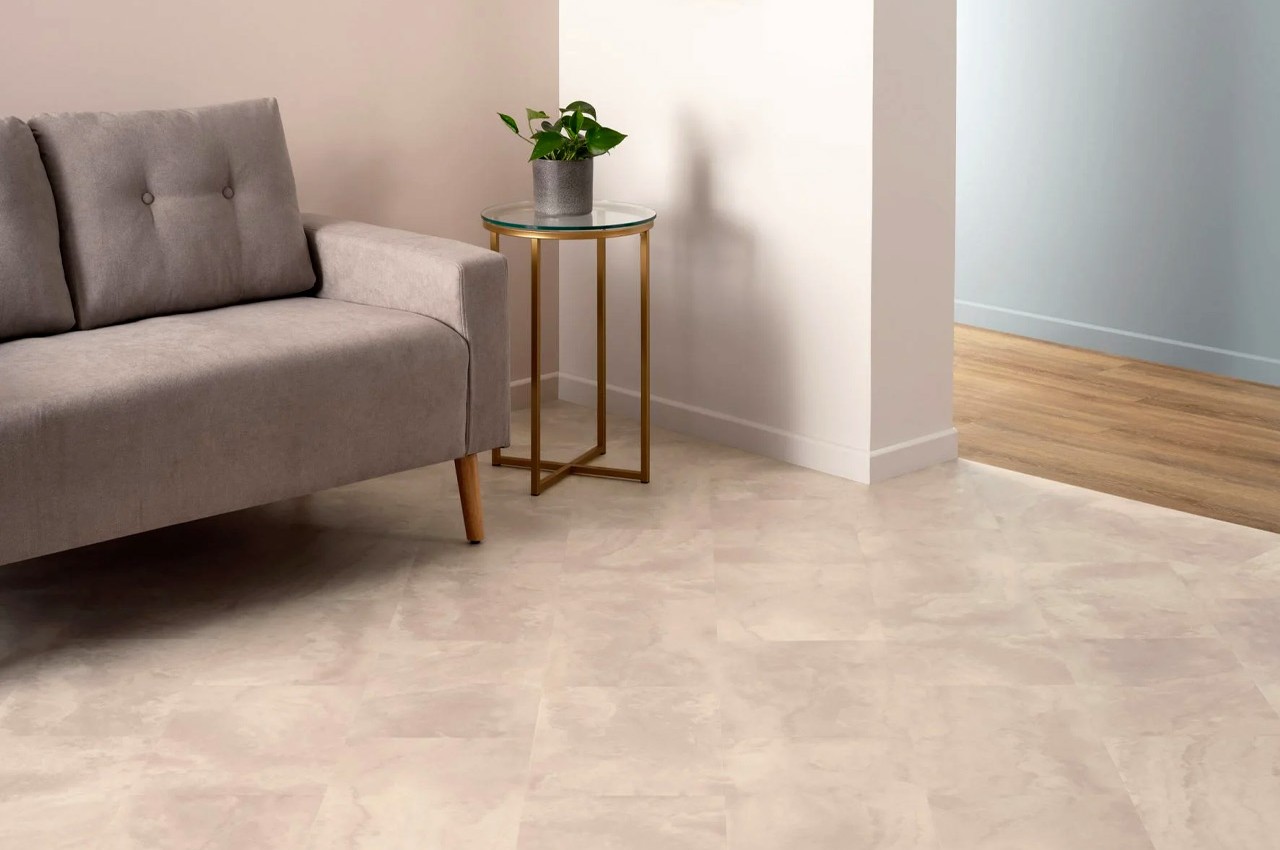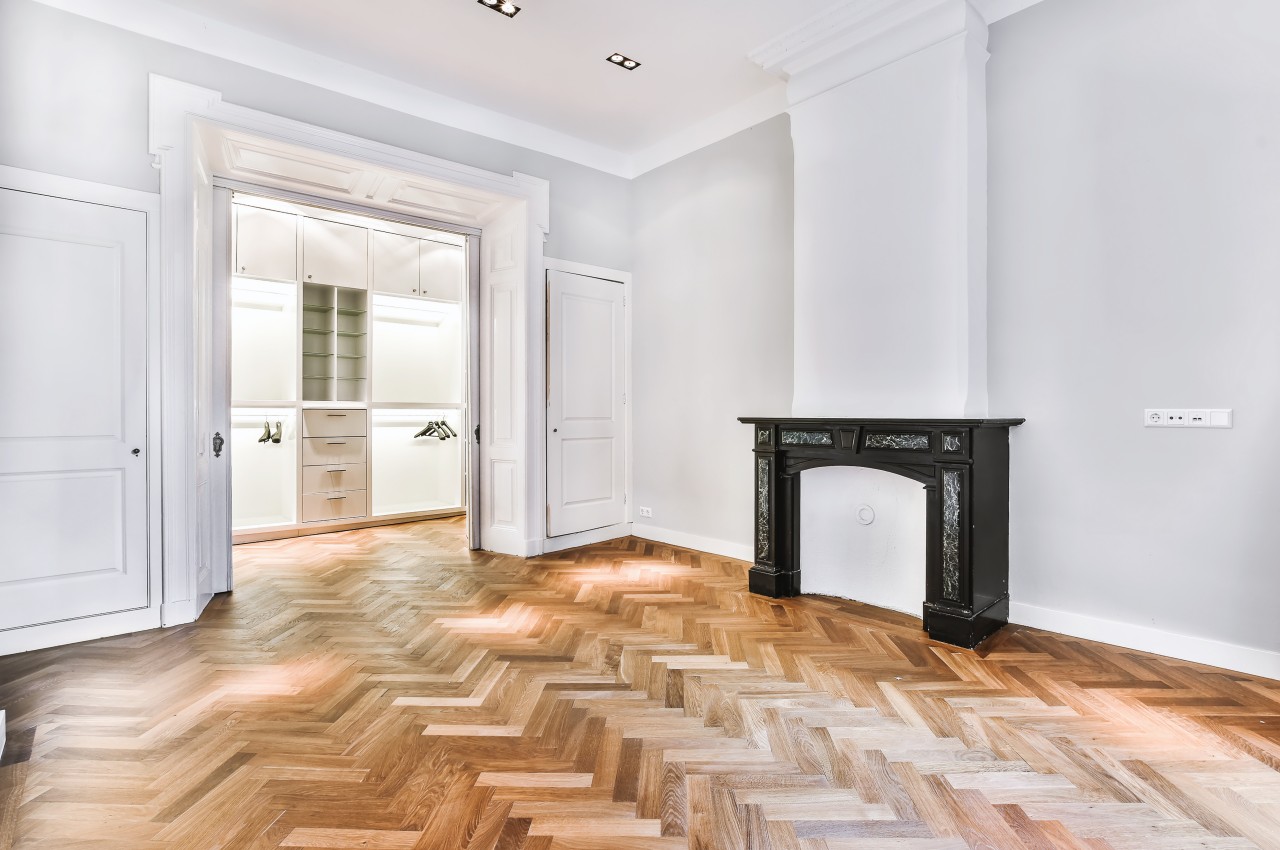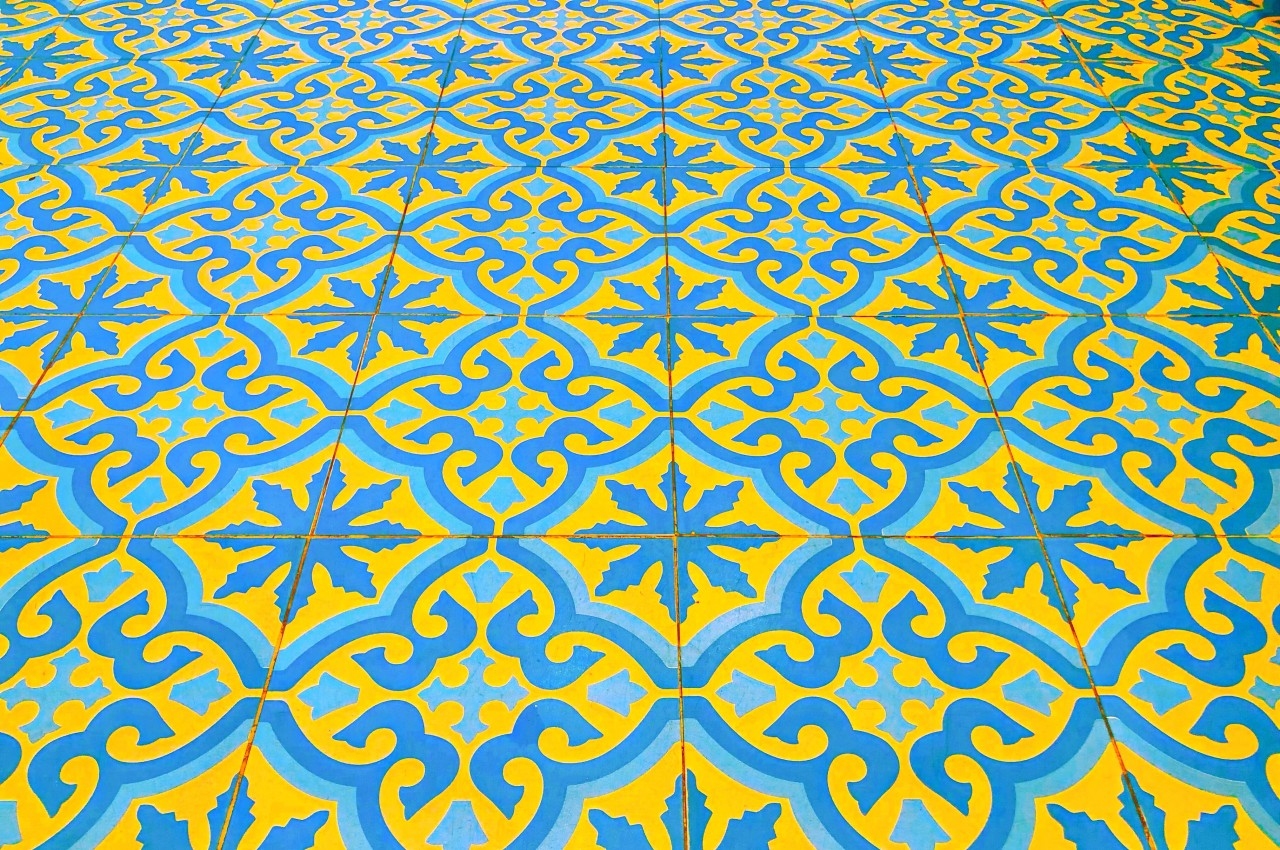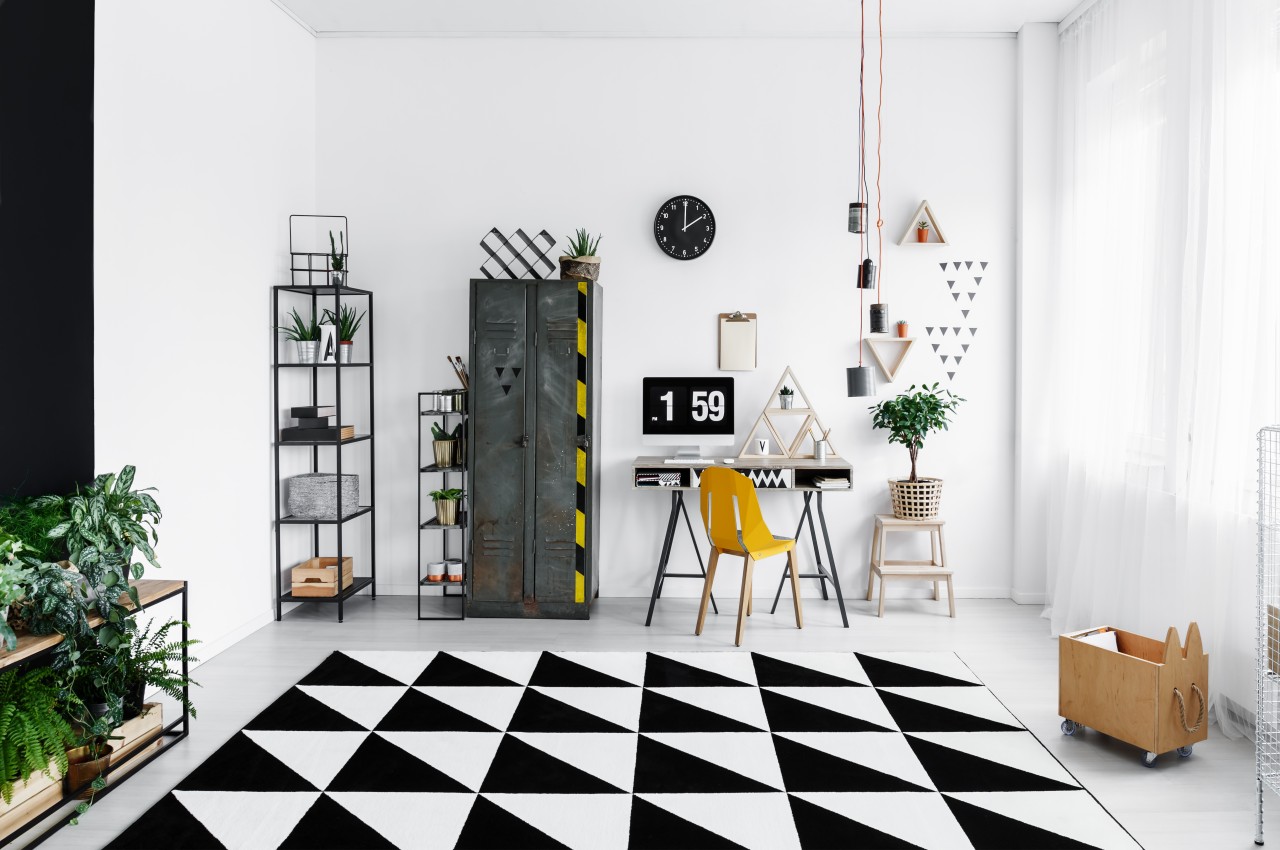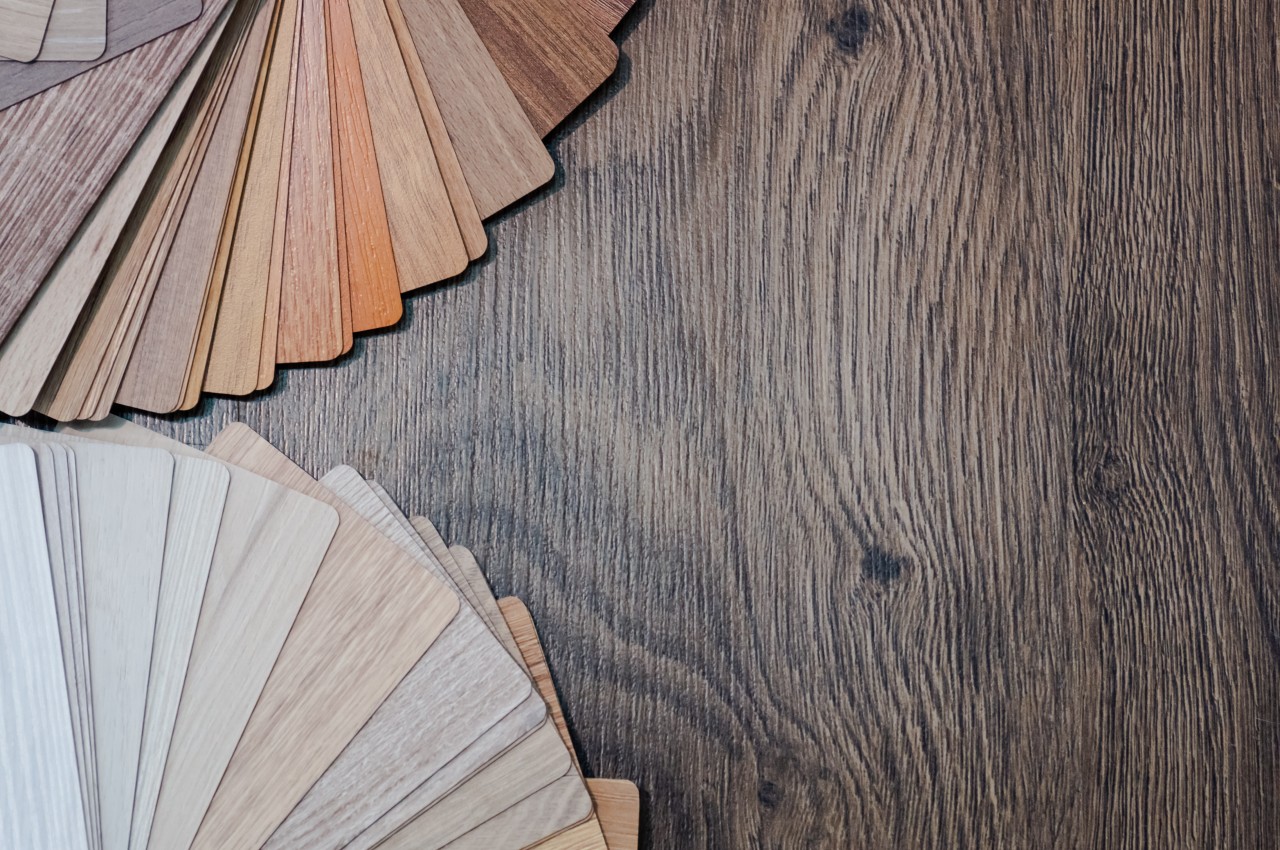
Both vinyl and laminate flooring form affordable and durable options for flooring. However, before selecting the flooring material it’s important to consider their specific strengths and weaknesses to ensure which flooring material is best suited for your home. Most laminate floors and some luxury vinyl planks are installed as floating floors, where boards and tiles interlock like puzzle pieces and rest on the subfloor.
Image courtesy of: StiahailoAnastasiia
Laminate Flooring
Laminate flooring is a synthetic material, unlike natural options such as wood, stone, or cork. Made with a fiberboard core and finished with a resin layer, laminate flooring offers a budget-friendly option for enhancing your home’s aesthetic appeal. With a décor layer or printed image, it can replicate the look of more expensive flooring types like wood, tile, or stone. This durable flooring choice is particularly suitable for dry areas like living rooms or bedrooms, where moisture is not a concern.
Advantages of Laminate Flooring
Laminate flooring is exceptionally durable and offers patterns and textures that mimic marble, tile, or real wood like teak, oak, cedar, and pinewood which enhances its stylish appearance. Additionally, laminate flooring with foam underlayment can help dampen hollow sounds underfoot.
Disadvantages of Laminate Flooring
Laminate flooring is sensitive to excess moisture, including damage from steam mops. Another disadvantage is that the resin surface can be easily scratched by abrasive scrubbers or sponges and low-quality laminate flooring tends to fade faster in the presence of sunlight.
Vinyl Flooring
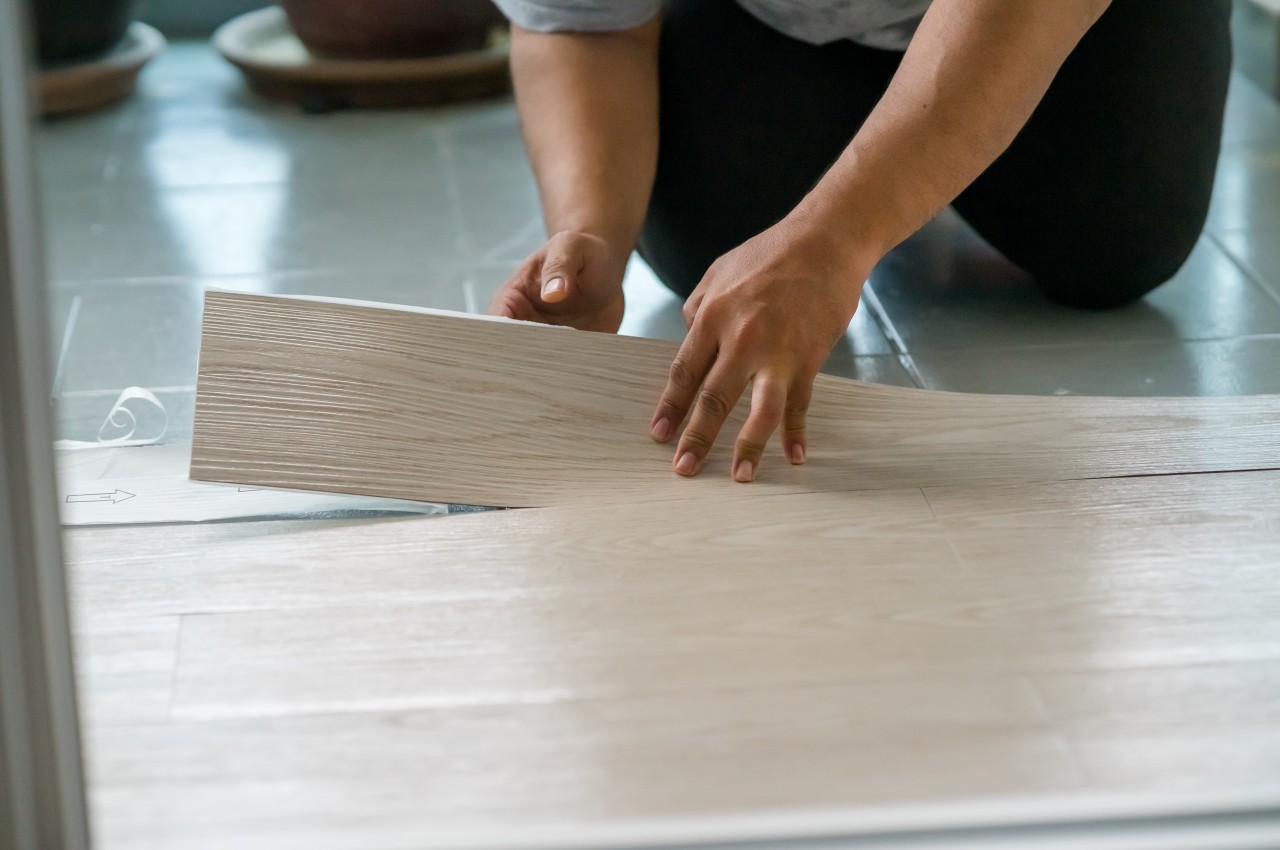
Image courtesy of: ellinnur
Unlike laminate, vinyl is a synthetic plastic material often made with PVC vinyl and fiberglass for added flexibility. Vinyl is highly regarded for its durability, moisture resistance, and easy installation, with many options featuring a convenient peel-and-stick backing for DIY projects. It comprises a bottom layer, called the backing layer, which is typically made of cork or foam. It serves as both the underlayment for the vinyl flooring and a cushion for comfort while walking and functions as a sound barrier to reduce noise. The common types of vinyl flooring include Luxury Vinyl Planks (LVP), Luxury Vinyl Tiles (LVT), and Sheet Vinyl.
Advantages of Vinyl Flooring
Vinyl flooring holds up well in areas with heavy foot traffic and is easy to install, especially peel-and-stick vinyl tiles that can be grouted for a natural stone look. Vinyl’s water-resistant properties make it ideal for moisture-prone areas like kitchens and bathrooms and this material resists fading in natural light.
Disadvantages of Vinyl Flooring
Vinyl emits volatile organic compounds (VOCs) over time and can be difficult to remove due to the adhesives and glues used in installation. Unlike some flooring options, vinyl cannot be patched or repaired. Another minus is that vinyl flooring is not biodegradable and the presence of heavy furniture and appliances on the flooring can cause dents.
What is the difference between Laminate and Vinyl Flooring?
Here are some parameters considered when comparing laminate and vinyl flooring.
1. Appearance
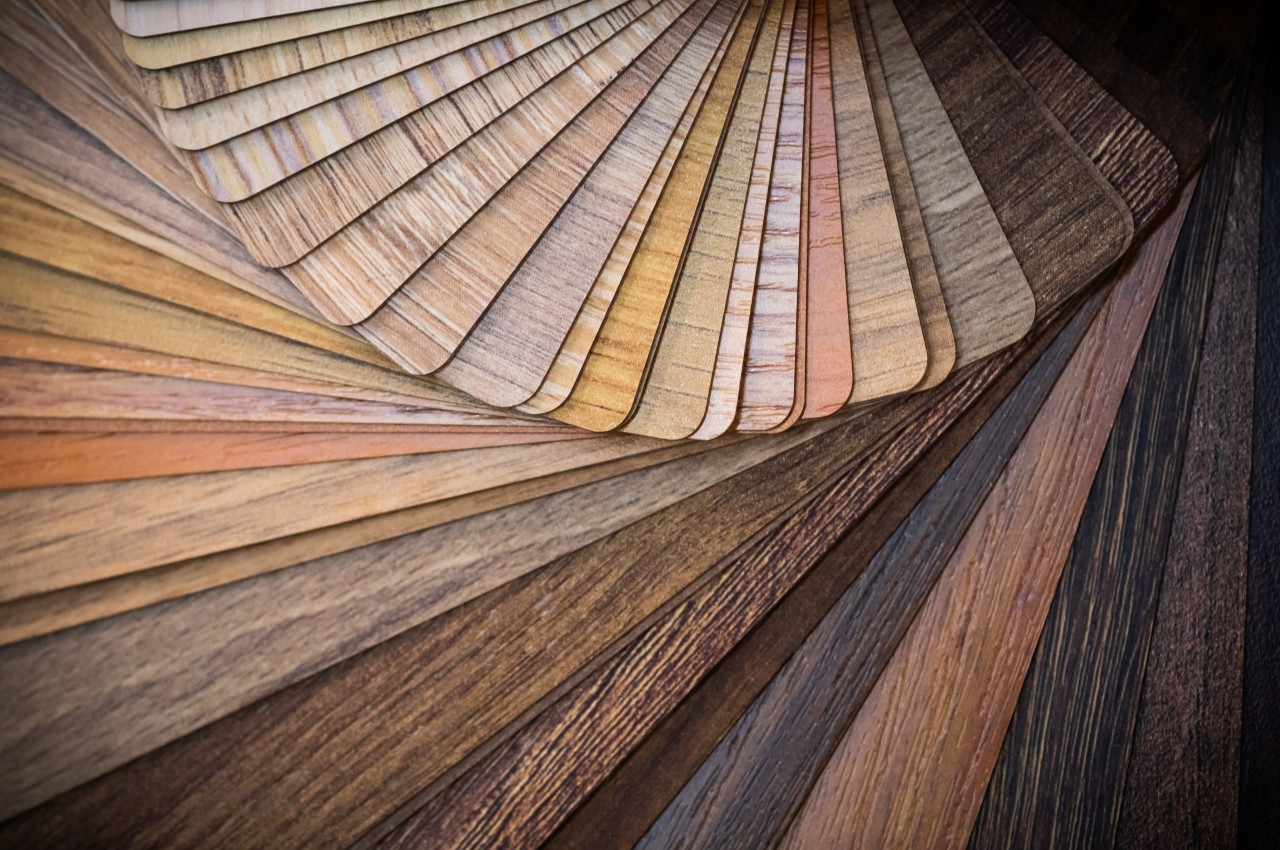
Image courtesy of: StiahailoAnastasiia
High-end laminate flooring typically mimics wood more naturally, with a texture similar to wood, while vinyl, composed of synthetic polyvinyl chloride (PVC) and sealed with urethane, tends to have a shiny and synthetic appearance.
2. Layers of Materials Utilized
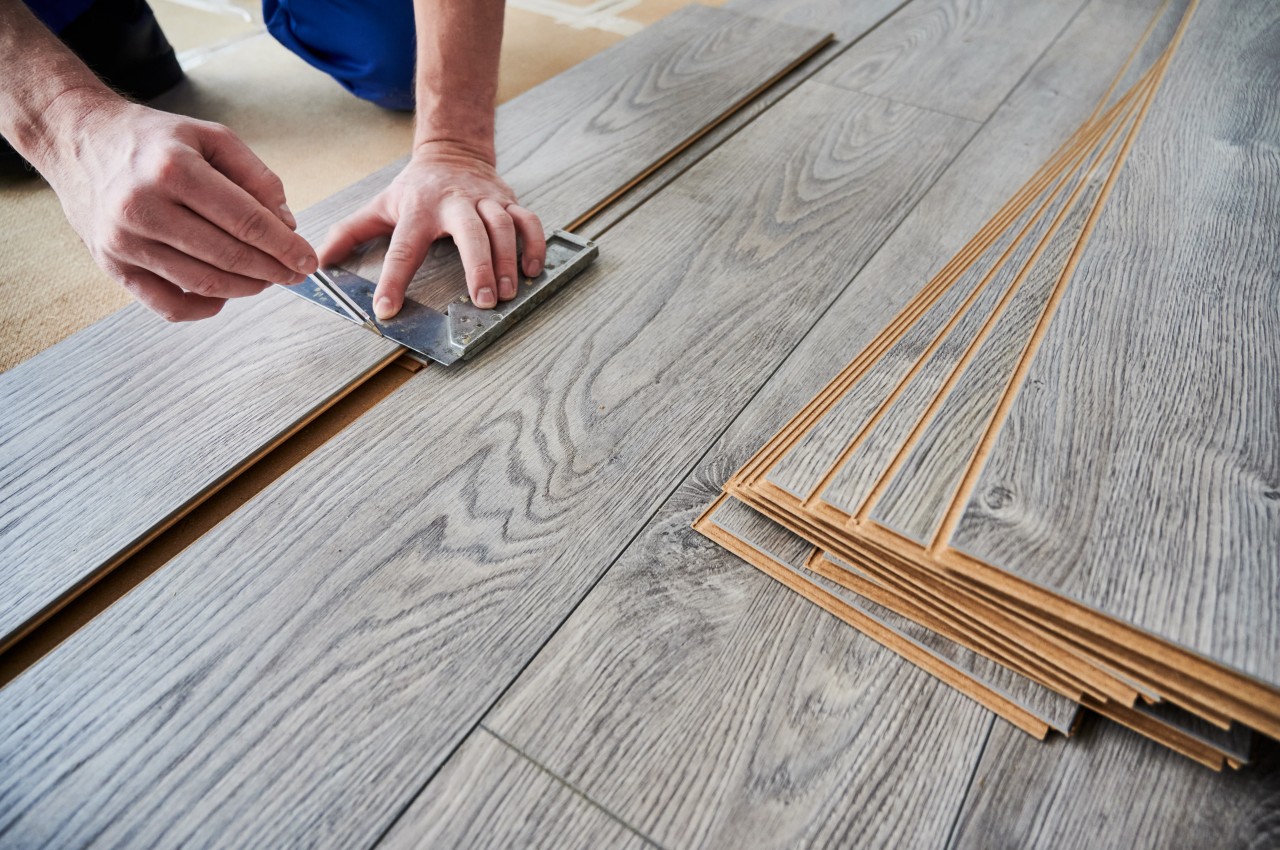
Image courtesy of: anatoliy_gleb
Laminate Flooring
The multiple layers of laminate flooring include:
• Featuring a clear aluminum oxide layer, the Wear Layer protects the floor against scratches.
• Defining the flooring’s image or visual appearance is the Print Layer.
• Constructed from highly compressed wood fibers, the Core Layer forms the main body of the floor.
• Aiding with uneven subfloors is the Built-in Underlayment, which includes a soft layer.
Vinyl Flooring
Vinyl Flooring comprises multiple layers namely:
• Protection against sun damage is provided by the UV Acrylic Coating.
• Guarding against scratches is the role of the Wear Layer.
• Defining the visual appearance of the flooring is the responsibility of the Print or Image Layer.
• The PVC layer ensures stability, support, and durability at the core.
• Helping to level uneven subfloors is the soft layer of the Built-in Underlayment.
3. Durability
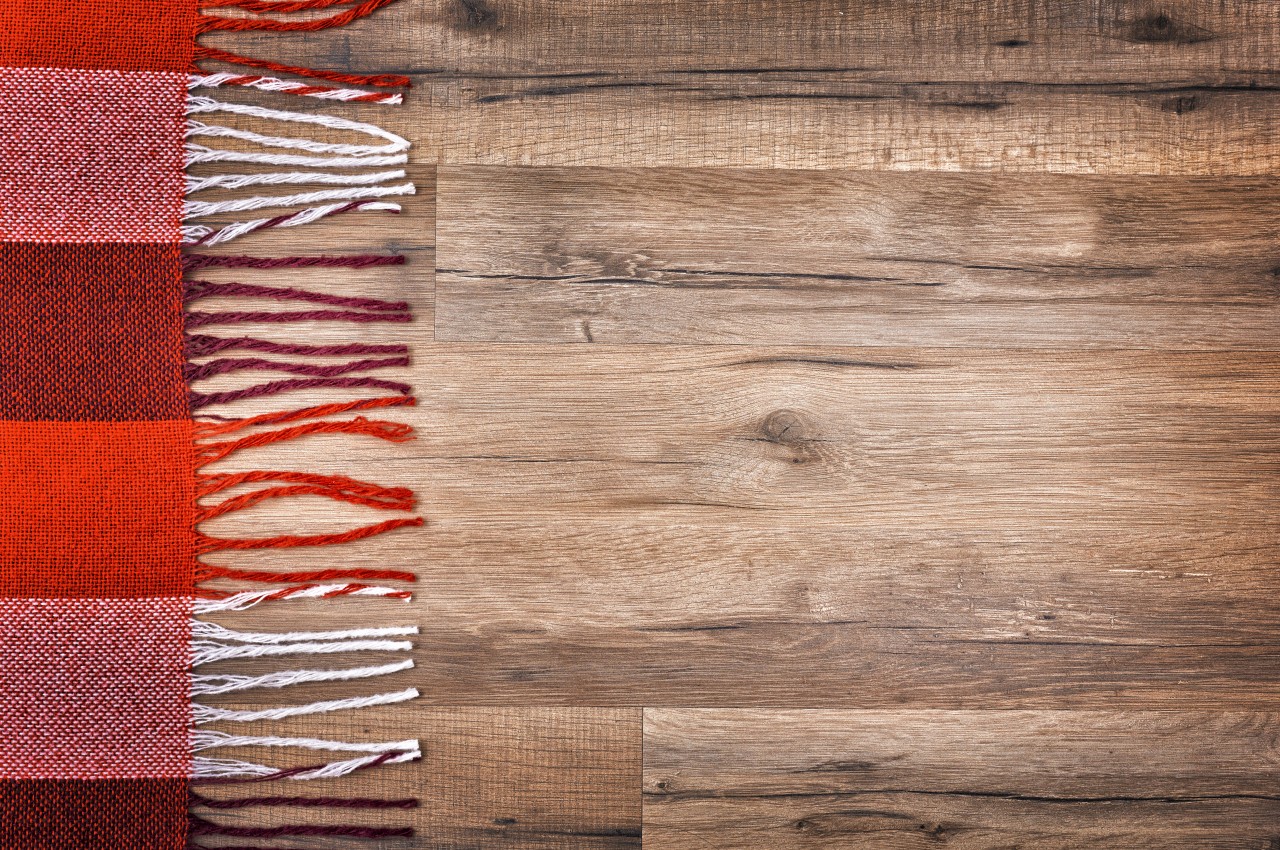
Image courtesy of: choreograph
Vinyl flooring is a resilient flooring material and it requires minimal maintenance, even in commercial settings. Laminate flooring, while also durable and low-maintenance, may delaminate over time, especially with prolonged water exposure, as repair is not possible and the flooring material allows water infiltration into lower layers. Note that thin vinyl flooring, with its single cohesive layer of polyvinyl chloride (PVC), is less prone to delamination compared to thicker varieties, which may have a soft underlayment that is susceptible to such issues.
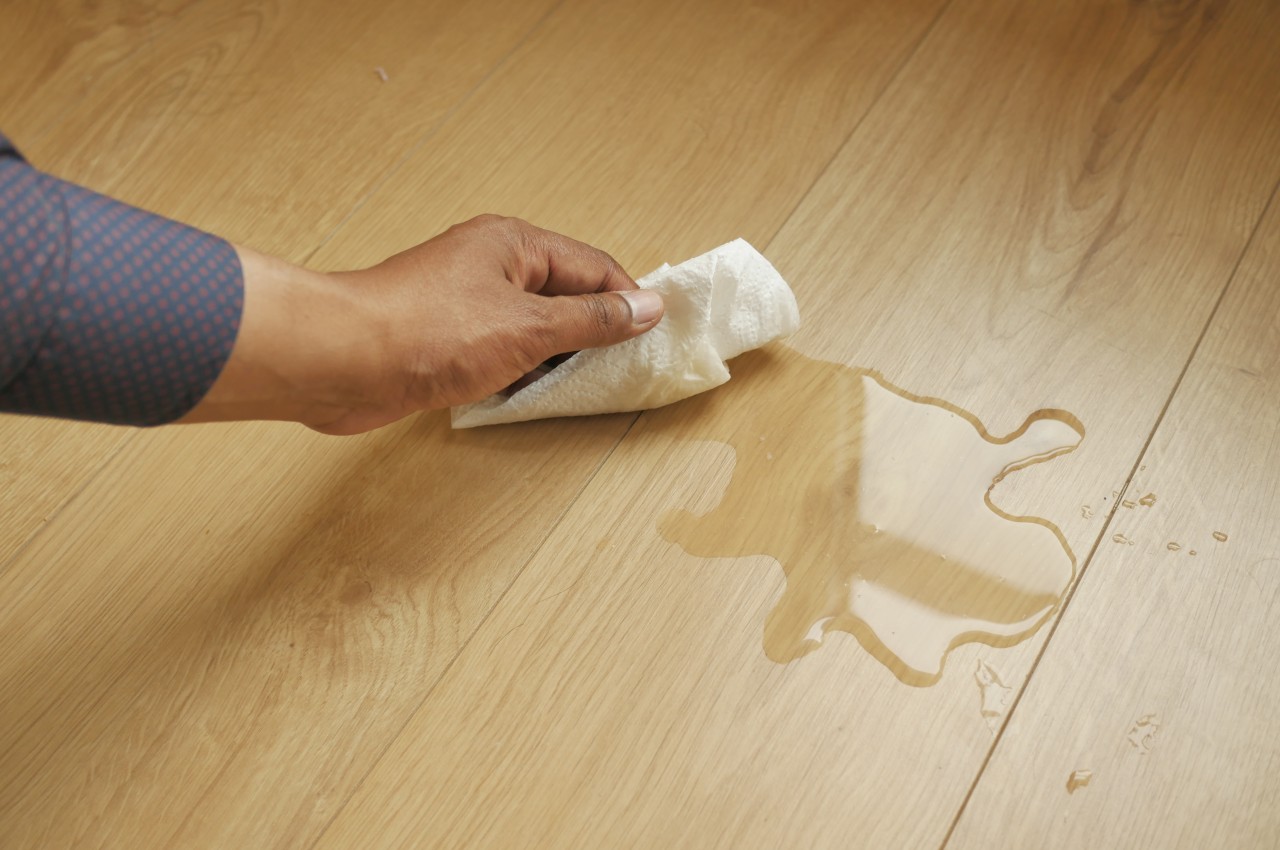
Image courtesy of: towfiqu98
4. Water, Stain, and Heat Resistance
• Water Resistance:
Laminate flooring, with its fiberboard core, can suffer irreversible damage from water exposure, leading to swelling and peeling layers. Replacement is often necessary for severe water damage, and while newer laminate materials may offer improved water resistance, they are not suitable for areas prone to standing water like bathrooms. In contrast, vinyl flooring, including sheet vinyl, LVT, and LVP, is inherently more water-resistant, with all types being waterproof. However, water can penetrate seams, reaching the subfloor in significant quantities. Vinyl flooring outperforms laminate in wet areas like bathrooms and basements.
• Stain Resistance:
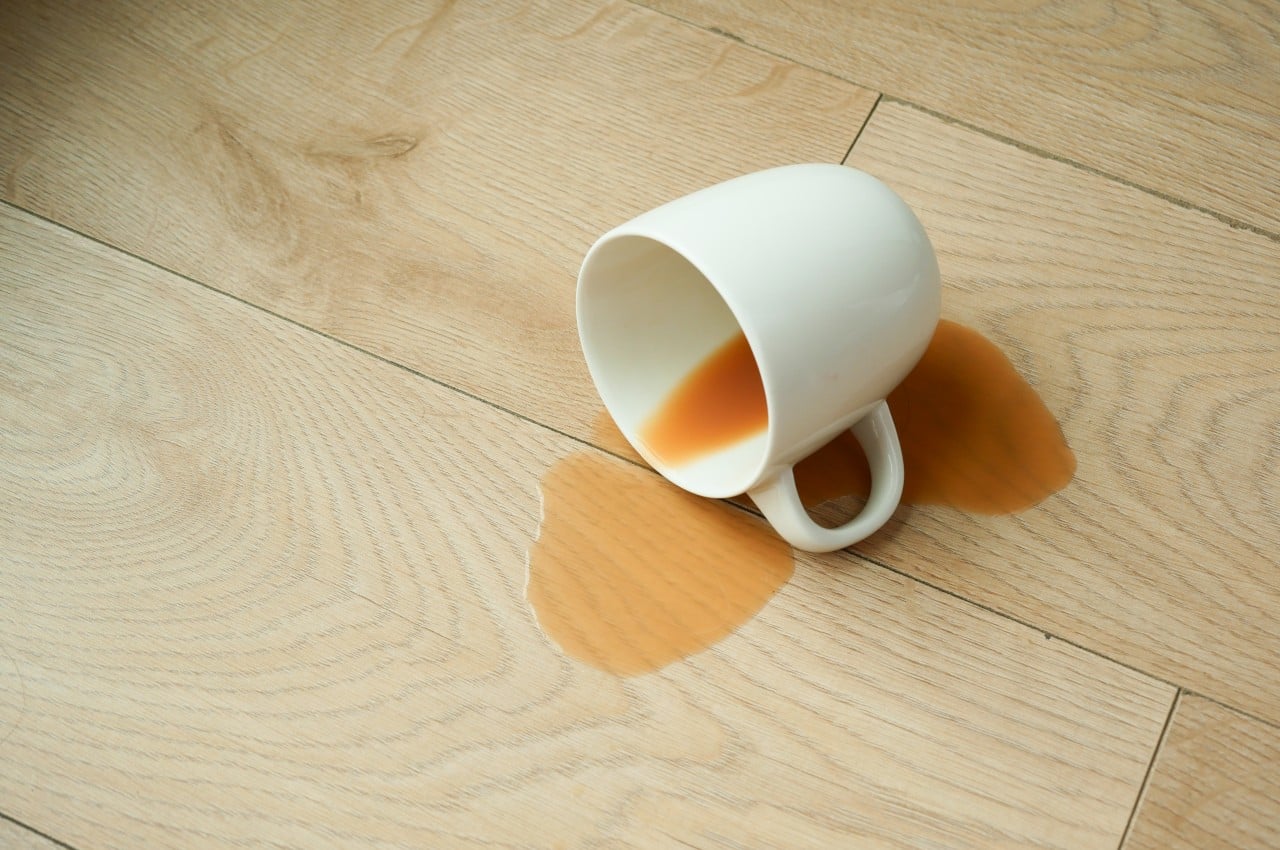
Image courtesy of: towfiqu98
Laminate and vinyl flooring both offer stain-resistant properties and feature wear layers that are treated to resist stains effectively. Laminate flooring uses a clear aluminum oxide top layer for superior stain resistance, while quality vinyl flooring is coated with transparent urethane for excellent stain resistance.
• Heat Resistance:
Both vinyl and laminate flooring have limited heat resistance and are susceptible to damage in the presence of heat. Exposure to extreme heat can lead to the burning of the top layer in laminate flooring, causing expansion and contraction issues, while prolonged exposure to extreme heat in vinyl flooring can result in expansion and melted adhesive.
5. Lifespan
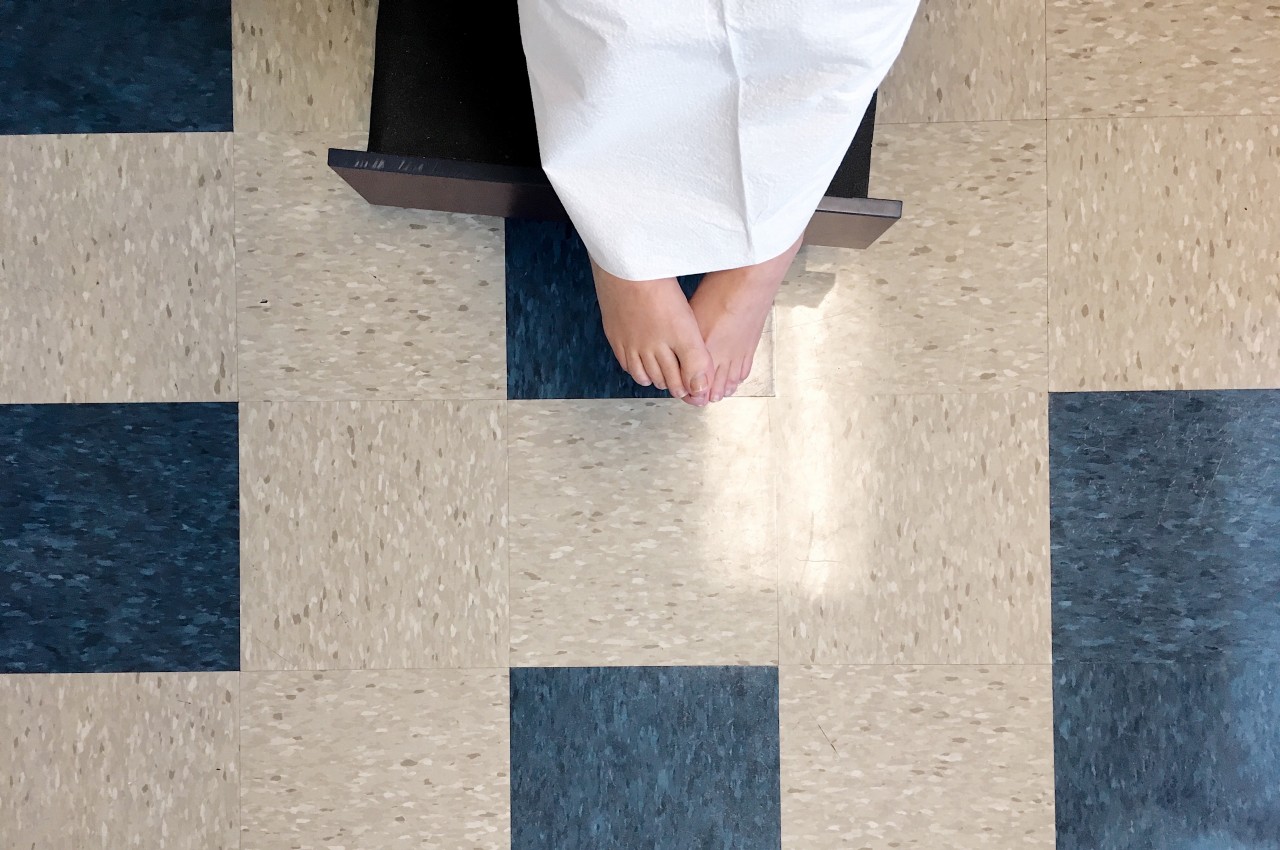
Image courtesy of: nikmock
Both laminate and vinyl flooring can offer comparable lifespans with proper maintenance, with laminate warranties typically ranging from 10 to 25 years and luxury vinyl warranties commonly extending up to 20 years. Vinyl is well-suited for high-humidity rooms like kitchens and bathrooms, whereas laminate performs better in high-traffic areas. Proper maintenance is crucial to prolong the lifespan of the flooring, and professional installation may be advisable if you lack experience.
6. Comfort and Acoustics
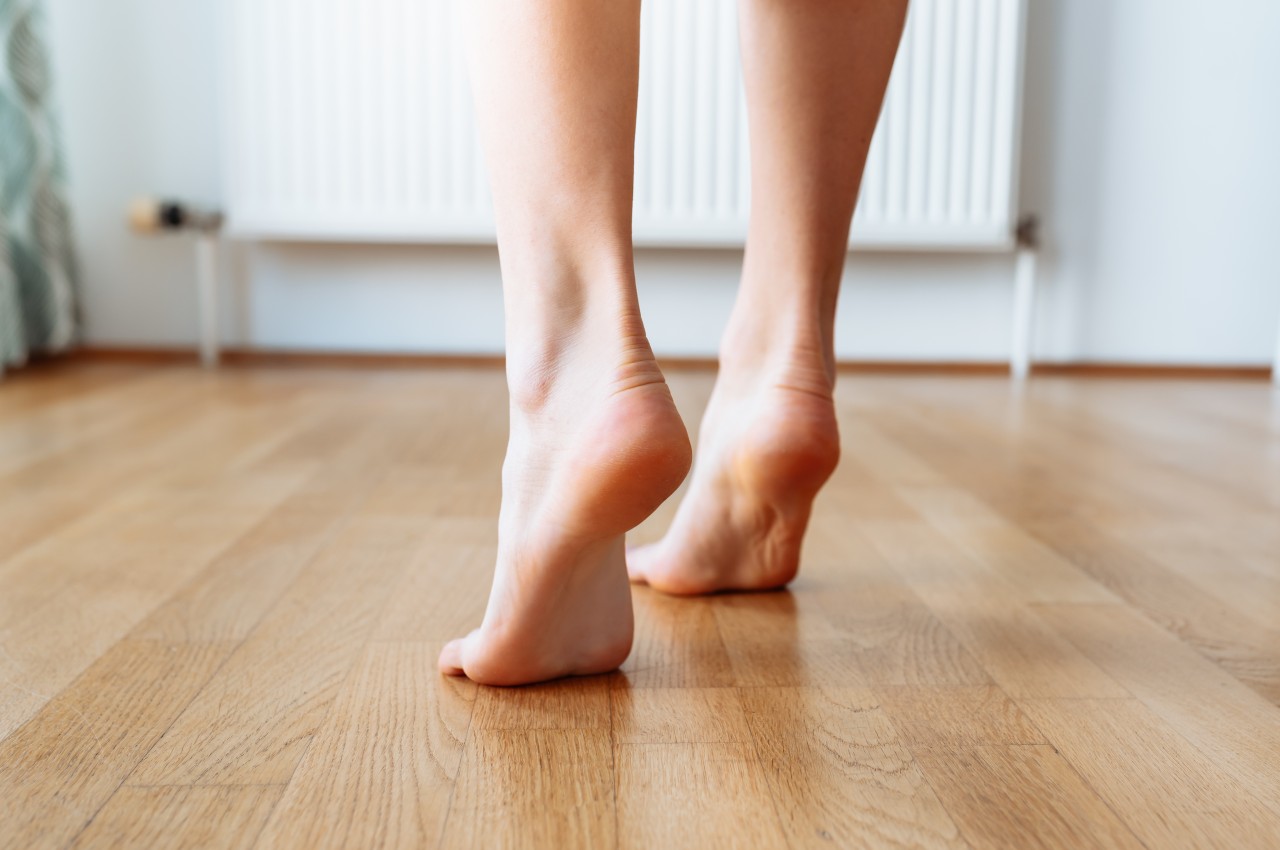
Image courtesy of: larisikstefania
Both laminate and vinyl flooring can offer a comfortable and quiet walking experience. Laminate flooring, while not identical to wood, can feel warmer, especially with quality underlayment, and may become quieter and softer with foam or felt underlayment. However, footsteps, especially with heels, may be audible on laminate. Vinyl floors, although they may feel cold or hard, especially over concrete or tile, tend to produce minimal noise when walking with heels.
7. Pet Friendly
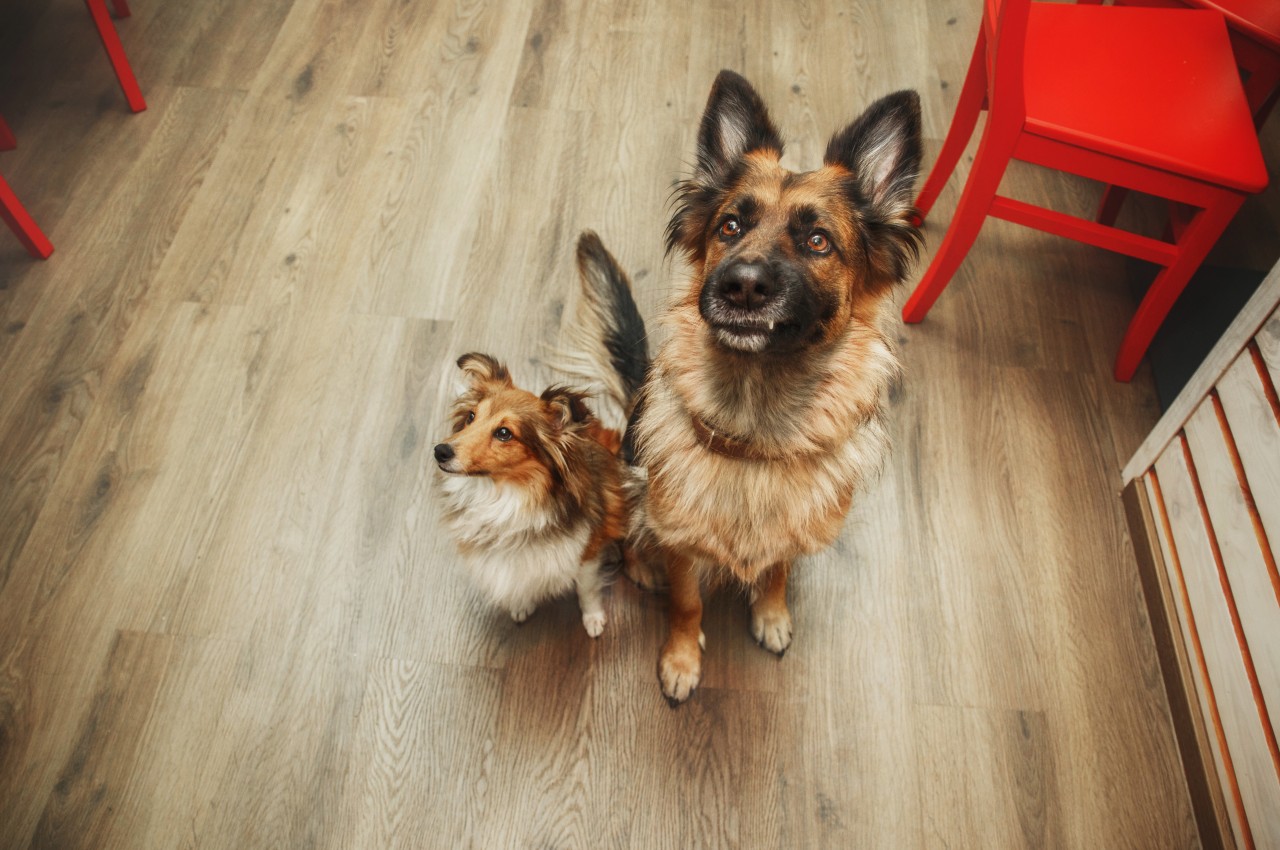
Image courtesy of: Olga_Ovcharenko
Vinyl flooring surpasses laminate for pet-friendly environments due to its 100% synthetic construction, which makes it waterproof.
8. Costing
Cost-wise, both vinyl and laminate flooring are competitive options, with sheet vinyl usually being more economical. Generally, they are less expensive compared to natural hardwood, engineered wood, and many ceramic or porcelain tile types, making them popular choices for budget-conscious consumers.
In conclusion, one can choose between vinyl and laminate flooring based on personal preferences like style and cost, but vinyl is superior in water resistance, especially in places like bathrooms. However, laminate is often preferred due to its versatility and natural look.
The post Laminate vs. Vinyl Flooring: Which is the Best Choice for Your Home? first appeared on Yanko Design.
